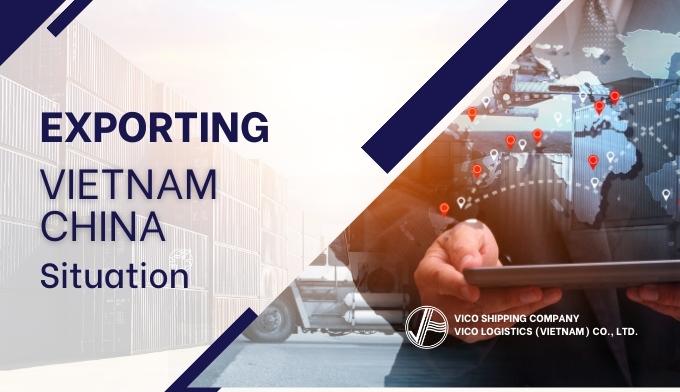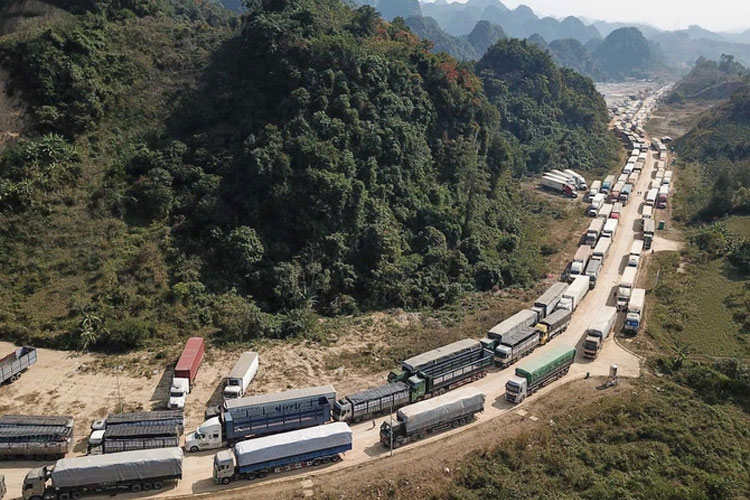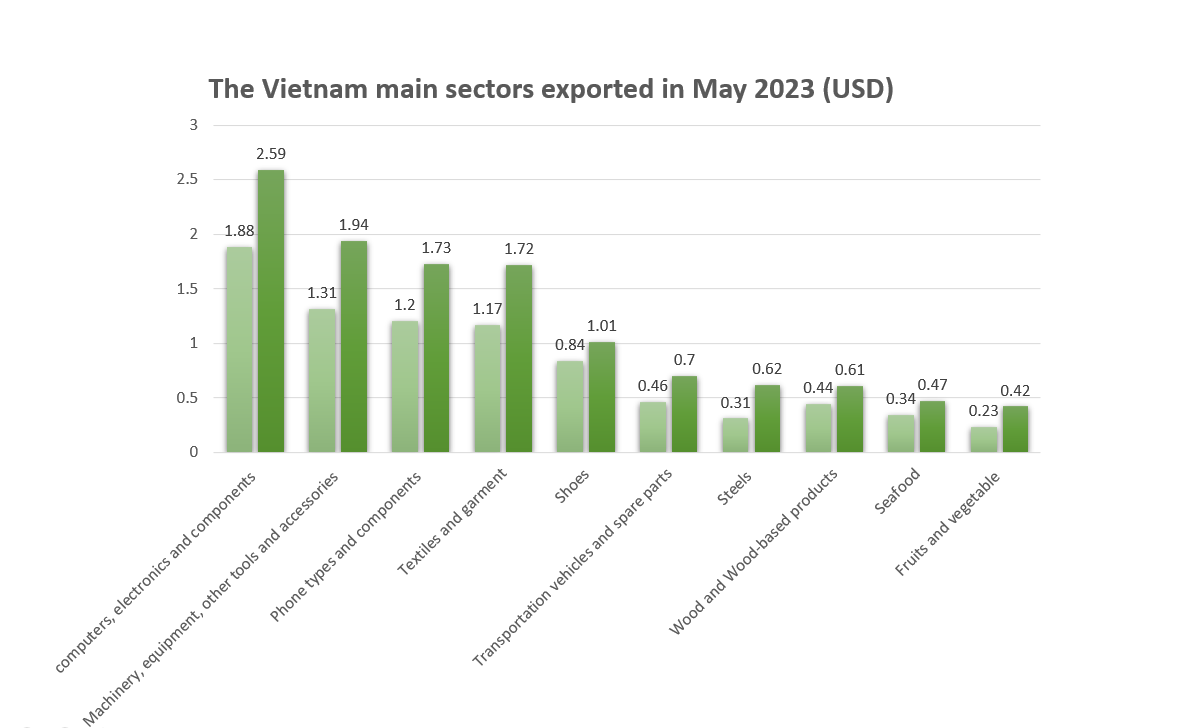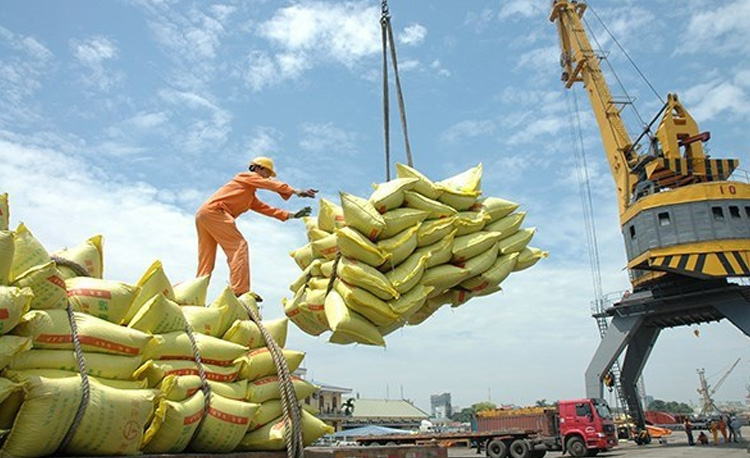
For many years, China has been considered the "big trading partner" of Vietnam. Vietnamese exports to China are diverse regarding goods, value, and market share. However, Vietnamese exports face many new barriers and challenges in the new context. So, what needs to be done to maximize development in this populous market?
1. China - Vietnam's Major Trading Partner
1.1 Updating the Situation of Vietnamese Exports to China
According to statistics from the General Statistics Office, in the first six months of 2023, Vietnam's total import-export turnover reached $316.73 billion, up 32.8% compared to the same period in 2022. The estimated export turnover reached $169.98 billion, up 28.4%; the estimated import turnover reached $146.75 billion, up 37.8%. Therefore, Vietnam achieved a trade surplus of $12.25 billion in the first six months of 2023.
China remains the most significant "trading partner among the export markets of Vietnamese goods." According to the Ministry of Finance data, in the first quarter of 2023, Vietnam's export turnover to China reached $11.54 billion. It is the second-largest export market of Vietnam, only after the United States.

1.2 Main Exported Goods of Vietnam
According to the General Department of Customs, some groups of goods with impressive export growth in the second quarter of May 2023 compared to the first quarter include computers, electronic components (increased by $714 million, equivalent to 38.1%); machinery, equipment, tools, and other accessories (increased by $632 million, equivalent to 48.4%); textiles and garments (increased by $547 million, equivalent to 46.7%); various types of phones and components (increased by $530 million, equivalent to 44.3%)

Notably, vegetable and fruit exports reached an unprecedented high of $422 million in the second quarter of May, up 1.8 times compared to the first quarter of the month, thanks to the growth of durian exports.
2. Opportunities for Vietnamese Exports to China in the New Context
In the new context, Vietnamese exports to China have many development opportunities:
Firstly, China is the world's largest consumer market, with a population of over 1.4 billion and the world's second-largest GDP with over $14 trillion in 2022. The consumer demand of the Chinese people is increasing, especially for high-quality, safe, and environmentally friendly products.
China is Vietnam's strategic trading partner within the framework of ASEAN - China, and RCEP (Regional Comprehensive Economic Partnership). These agreements have created many advantages for Vietnamese exports to China, such as reduced tariffs and trade barriers and promoting regional economic cooperation.
Last but not least, China is one of the fastest-recovering countries after the Covid-19 pandemic. According to World Bank data, China's GDP grew by 8.1% in 2022 and is expected to grow by 5.4% in 2023. The recovery of China's economy has led to the recovery of consumer demand and imports of this country.
>>Vietnam to China Coffee Export Journeys with VICO Logistics
3. China is no longer an easy market
Vietnamese exports to China also cannot be complacent because China is a more challenging market than before. Vietnamese exports must face many new barriers and challenges.
3.1 Export Barriers
One of the most significant export barriers Vietnamese exports to China face is food safety and labor safety regulations.
In recent years, China has tightened standards for food safety and labor safety to protect the health of its people and the environment. This has led to stricter inspections or complete bans on the import of many Vietnamese exports to China.
For example, in June 2022, China announced a ban on importing catfish from Vietnam due to concerns about quality and safety.
Another example, in October 2022, China announced new regulations on labor safety for clothing and garment manufacturing and exporting enterprises. Accordingly, companies must ensure that workers are not abused, forced to work, underpaid, lacking protective equipment, or exposed to harmful substances. Violating companies will be heavily fined or banned from exporting to China.
3.2 New Challenges for Vietnamese Exports
In addition to export barriers, Vietnamese exports to China face many new challenges.
Firstly, fierce competition from other countries. While Vietnamese exports to China have many advantages in terms of price and quality, some Vietnamese goods need more innovation and uniqueness. This makes Vietnamese exports vulnerable to being replaced by products from other countries with similar or better quality and prices.
Changes in Chinese consumer demands. Chinese consumers are increasingly higher-income, more conscious, and have higher needs for consumer products. They are interested in price and quality and in brands, trends, added value, and the product experience. This requires Vietnamese exports to China to enhance market research capabilities, understand customer psychology, and design products according to customer requirements and desires.
4. Adaptation Needed for Vietnamese Exports
Faced with new barriers and challenges, Vietnamese exports to China need strategic adaptation:
Improve the quality and safety of products. This is the most critical factor for Vietnamese exports to China to be accepted and trusted. Vietnamese exports must comply with China's standards for food safety and labor safety and regulations for certification, inspection, control, and supervision by competent authorities.
Innovate and create new products. This is a necessary factor for Vietnamese exports to China to compete with other countries and meet the consumer demands of the Chinese people. Businesses must conduct market research, understand customer psychology, and design products according to customer requirements and desires.
Build and promote the brand.

This is a decisive factor for Vietnamese exports to China to differentiate and create uniqueness for products, increase added value, and provide a better experience for customers. Vietnamese exports must build a strong, reputable, and unique brand that reflects the product's identity, value, and benefits.
5. VICO Logistics and the Role in Promoting Vietnamese Exports to China
In exporting goods to China, transportation is an equally important factor. Transportation is the link between producers and consumers, affecting product time, cost, and quality. Transportation is also a process with many risks and difficulties, requiring professionalism, experience, and the reputation of transportation partners. This is why VICO Logistics - a reliable Vietnamese export transportation partner - is vital in promoting Vietnamese exports to China.
5.1 Introduction to VICO Logistics
VICO Logistics is an international transportation unit specializing in providing transportation services for goods by sea, road, rail, and air. VICO is headquartered in Shenzhen, China, and has branches in Vietnam (Hai Phong, Da Nang, Ho Chi Minh City), forming a widespread network.
5.2 VICO Logistics - Reliable Vietnamese Export Transportation Partner
VICO Logistics always strives to provide customers with the best transportation services for Vietnamese exports to China.
VICO has an extensive network, connecting with many reliable and reputable partners. VICO Logistics always ensures a fast, efficient, and least risky delivery process for businesses and supports solutions to address arising issues.
If your business needs to export goods to China, let us help.
-------
VICO LOGISTICS – Indochina Logistics Expert
Premium member of Eurocham, JCtrans, VLA, VCCI,... associations
Owned offices: Hong Kong (headquarter), China (Shenzhen, Shanghai), Vietnam (Ho Chi Minh, Da Nang, Hai Phong).
Follow us for more valuable information
Book now: https://vico.com.hk/#quotation
Contact us: mkt4_hcm@vico.com.hk (For business development)






